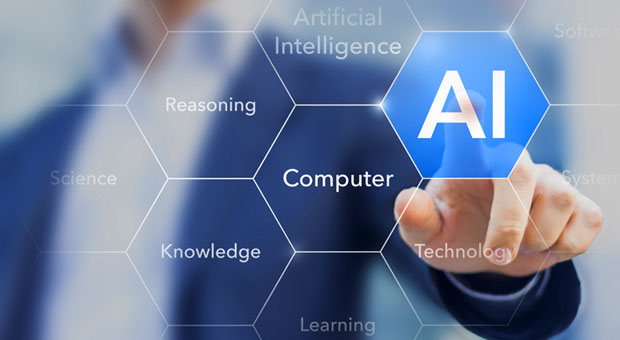
Artificial intelligence (AI) has become an integral part of our daily lives, revolutionizing how we interact with technology and transforming various industries.
In this article, we will explore the extensive application of AI in Google's products and services, highlighting how the company utilizes machine learning to push the boundaries of technological innovation.
From AI-powered search algorithms to enhancing user experiences through personalization, Google leverages the power of AI to stay at the forefront of advancements in this rapidly evolving field.
Key Takeaways
- Google's AI-powered search and personalization revolutionized information retrieval, providing more relevant and personalized search results.
- Natural language processing and communication enabled computers to understand and interpret human language, breaking down language barriers and enhancing global communication.
- AI has revolutionized smart devices, enabling effortless interaction and access to information through voice commands and integrating into smart homes for enhanced functionality.
- Advancements in computer vision have revolutionized industries with image recognition technology, enabling accurate identification of objects, landmarks, and human faces, and even contributing to the development of self-driving cars.
AI-powered search algorithms have revolutionized information retrieval by enhancing the accuracy and efficiency of Google's search engine. Through the integration of artificial intelligence (AI) technologies, Google has been able to provide users with more relevant and personalized search results.
AI powered chatbots have transformed customer service by enabling businesses to provide immediate assistance to their customers. These chatbots utilize natural language processing techniques to understand and respond to user queries in real-time.
Additionally, AI has made significant advancements in the field of healthcare by revolutionizing diagnosis and treatment. With machine learning algorithms, Google is able to analyze vast amounts of medical data to identify patterns and predict diseases more accurately than ever before. This has led to improved patient outcomes and a more efficient healthcare system overall.
Overall, Google's use of AI solutions is pushing boundaries and ensuring that they remain at the forefront of technological innovation.

Enhancing User Experience with AI-Driven Personalization
By leveraging machine learning techniques, Google has been able to enhance user experience through personalized recommendations and tailored content. This is achieved by analyzing vast amounts of user data and applying sophisticated algorithms to understand individual preferences and interests.
The following are four key ways in which AI-driven recommendations and personalized content are transforming the user experience:
Personalized Search Results: Google's search algorithms now consider a user's browsing history, location, and previous interactions to deliver more relevant search results.
Tailored Advertising: Advertisements displayed on Google platforms are customized based on users' demographics, interests, and online behavior.
YouTube Recommendations: AI analyzes viewers' watch history, likes, and dislikes to suggest videos that align with their preferences.
Smart Assistant Integration: AI-powered smart assistants like Google Assistant provide personalized responses by learning from users' past interactions and preferences.
Through these advancements in AI-driven recommendations and personalized content, Google continues to improve the overall user experience across its products and services while staying at the forefront of technological innovation.

Natural Language Processing: Breaking Down Communication Barriers
Natural Language Processing (NLP) is a technology that is revolutionizing communication by enabling computers to understand and interpret human language, breaking down barriers between humans and machines. Google has harnessed the power of NLP in various products and services to enhance user experience and provide innovative solutions. One notable application is language translation, where Google Translate utilizes NLP algorithms to accurately translate text between different languages. This enables individuals from diverse linguistic backgrounds to communicate effectively without the need for intermediaries. Additionally, Google's sentiment analysis capabilities employ NLP techniques to analyze the emotions and opinions expressed in text, allowing businesses to gain valuable insights from customer feedback and reviews. Through these advancements in NLP, Google continues to push boundaries and leverage machine learning to improve communication and understanding on a global scale.
| Application |
Description |
| Language Translation |
Utilizes NLP algorithms for accurate translation between languages |
| Sentiment Analysis |
Analyzes emotions and opinions expressed in text for valuable insights |
| Communication Enhancement |
Breaks down language barriers, facilitating effective communication |
Table: Applications of Natural Language Processing in Google's AI Solutions
AI in Smart Devices: The Rise of the Virtual Assistant
The rise of virtual assistants has revolutionized smart devices, enabling users to effortlessly interact with their devices and access information through voice commands. Google has been at the forefront of this innovation, leveraging artificial intelligence (AI) and machine learning to provide advanced virtual assistant capabilities.
Virtual assistants in healthcare have become increasingly popular, allowing users to ask medical questions, schedule appointments, or receive medication reminders. Google's AI-powered voice recognition technology has also been integrated into smart homes, allowing users to control various aspects of their home environment simply by speaking commands. This technology has made homes more efficient and convenient, as users can adjust lighting, temperature settings, or even lock doors using voice commands.
Overall, Google's AI solutions have greatly enhanced the functionality and usability of smart devices while pushing the boundaries of technological innovation.
Advancements in Computer Vision: From Image Recognition to Self-Driving Cars
Advancements in computer vision have revolutionized various industries, from image recognition technology to the development of self-driving cars. Google has been at the forefront of leveraging computer vision through its use of self-learning algorithms and deep neural networks.
Here are three remarkable ways in which Google's AI solutions have pushed the boundaries of computer vision:

Image Recognition: Google's AI-powered image recognition technology can accurately identify objects, landmarks, and even human faces in photographs or videos.
Augmented Reality: By combining computer vision with augmented reality, Google has created immersive experiences that overlay digital information onto the real world.
Self-Driving Cars: Through sophisticated computer vision systems, Google's autonomous vehicles can perceive their surroundings and make real-time decisions based on visual input.
Google continues to invest in research and development to refine its computer vision capabilities, ensuring it stays ahead in the field of artificial intelligence and technological innovation.
Frequently Asked Questions
Google utilizes AI powered search algorithms to revolutionize information retrieval by enhancing the accuracy and relevance of search results. These algorithms analyze user behavior, context, and content to provide personalized and more efficient search experiences, ensuring users find the information they need quickly and effortlessly.
What are some examples of AI-driven personalization that enhance user experience in Google's products and services?
AI-driven personalization is a key aspect of Google's products and services, enhancing user experience. Google utilizes machine learning to tailor search results, recommend personalized content, and provide targeted advertisements. Additionally, Google's AI advancements in healthcare have the potential to revolutionize patient care and diagnostics.
How does Google leverage natural language processing to break down communication barriers?
Google leverages natural language processing through AI-powered translation and AI-driven chatbots to break down communication barriers. These technologies enable seamless understanding and interaction across languages, enhancing global connectivity and fostering a more inclusive digital society.

How is AI integrated into smart devices and what role does it play in the rise of virtual assistants?
Smart home integration is a prominent application of AI in smart devices, enabling voice-controlled virtual assistants to manage household tasks. Additionally, AI plays a vital role in healthcare by facilitating diagnostics, personalized treatments, and remote patient monitoring.
What are some advancements in computer vision that Google has made, particularly in areas like image recognition and self-driving cars?
Google has made significant advancements in computer vision, particularly in areas like image recognition and self-driving cars. These developments have paved the way for improved accuracy and efficiency in tasks such as object detection, facial recognition, and autonomous driving technology.
 GadgetsProduct ReviewsSmart DevicesDronesVirtual DevicesPrivacy PolicyTerms And Conditions
GadgetsProduct ReviewsSmart DevicesDronesVirtual DevicesPrivacy PolicyTerms And Conditions
